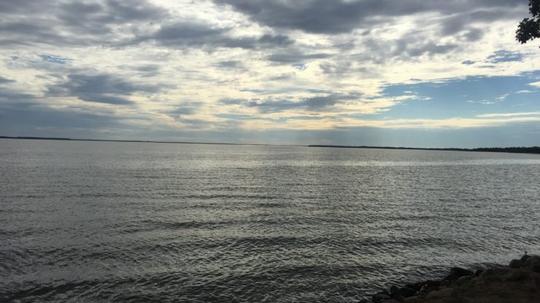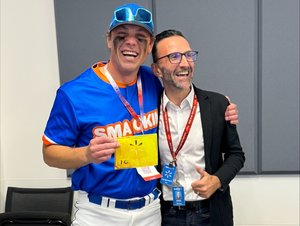
Minnesota's 11,842 lakes are among the state's most valuable resources. So it's no surprise that a few homegrown startups have popped up to preserve and protect them.
The Minnesota Department of Natural Resources identifies five key issues affecting the state's lakes. They include things like dwindling fish populations, invasive species and water quality. Each is a big problem, but one that several small companies aim to solve.
Eye on Walleye A team of three 12-year-old girls, called G.I.R.L.S can H.A.K, is bringing their fish-tracking to the Minnesota Cup's youth division this year. The three girls, Abby Polen, Paige Meierhofer and Meghan Barton are working to build a platform that will help track the DNR track fish populations.
The group's main focus is, of course, Walleye. On average, Minnesota's walleye population is increasing, according to the DNR. But over the last two decades, the number of fish in some lakes, including big ones like Lake Mille Lacs, has been going down. Since 1999, the DNR has worked to increase populations in certain lakes by stocking them each spring. But that doesn't always work.
A main component of the DNR's efforts today is evaluation. Why does stocking work in some lakes and not others? Exactly how many fish are in this particular lake? That's where G.I.R.L.S can H.A.K comes in .
Eye on Walleye is a semifinalist in this year's Minnesota Cup. The team has categorized five fish in five lakes and hopes to add five more by the end of the year.
Minnepura Technologies Inc. Founded by University of Minnesota professors and researchers, Minnepura uses bacteria-based biotech to remove harmful industrial chemicals from contaminated water.
Minnesota's lakes face numerous forms of pollution from everything from boats to agricultural runoff. It's a problem that carries health risks for animals and humans alike, and purification methods can be costly and unsustainable.
Minnepura's solution to a big problem is a small bead. The tiny, sponge-like beads are filled with bacteria, which eat potentially dangerous chemicals then naturally break them down into environmentally-friendly byproducts. The beads can last months, and can be customized to remove specific materials.
Since it was founded in 2013, the St. Paul-based company has received numerous accolades for its work. Last year, Minnepura was named one of the best university startups in the country, and pitched their idea to congress.
Carp Solutions The common carp was introduced into Minnesota waters as a game fish more than a hundred years ago. Since then, things have gotten a bit out of hand. The invasive species is now in hundreds of lakes across the state. Its presence affects growth of aquatic plants, and often leads to an overabundance of algae.
Carp Solutions, a company started by University of Minnesota researchers and supported by the college's Venture Center, is taking aim at the problem using more than a decade of research collected by its owner, ecological scientist Przemek Bajer.
Dr. Bajer discovered that while it's nearly impossible to eradicate an entire lake-worth of carp, reducing its population to a safe, non-harmful level is doable. The Carp Solutions team collects information on the fish in the area, then trains local personnel on how to best control the population. Methods include specialized nets and pumping oxygen into lakes during the winter (feeding fish that commonly eat carp eggs).
Carp Solutions has five ongoing projects in lakes across the state.
CD3 Carp aren't the only invasive species that have found their way into Minnesota waters. The DNR reports that approximately five percent (just over 500) of Minnesota's lakes are invested with various invasive plant and animal species.
Many of these species attach themselves to boats in the water, and when the boat leaves the lake, they do too. CD3, another semifinalist in this year's Minnesota Cup, is tackling the problem with user-operated watercraft cleaners placed at a half-dozen boat landings across the state.
The stations don't require power or specialty training to operate. Each is equipped with cleaning tools, educational resources and bait disposal to prevent the further spread of invasive species. The stations are also IOT-enabled, and assist with data collection.








